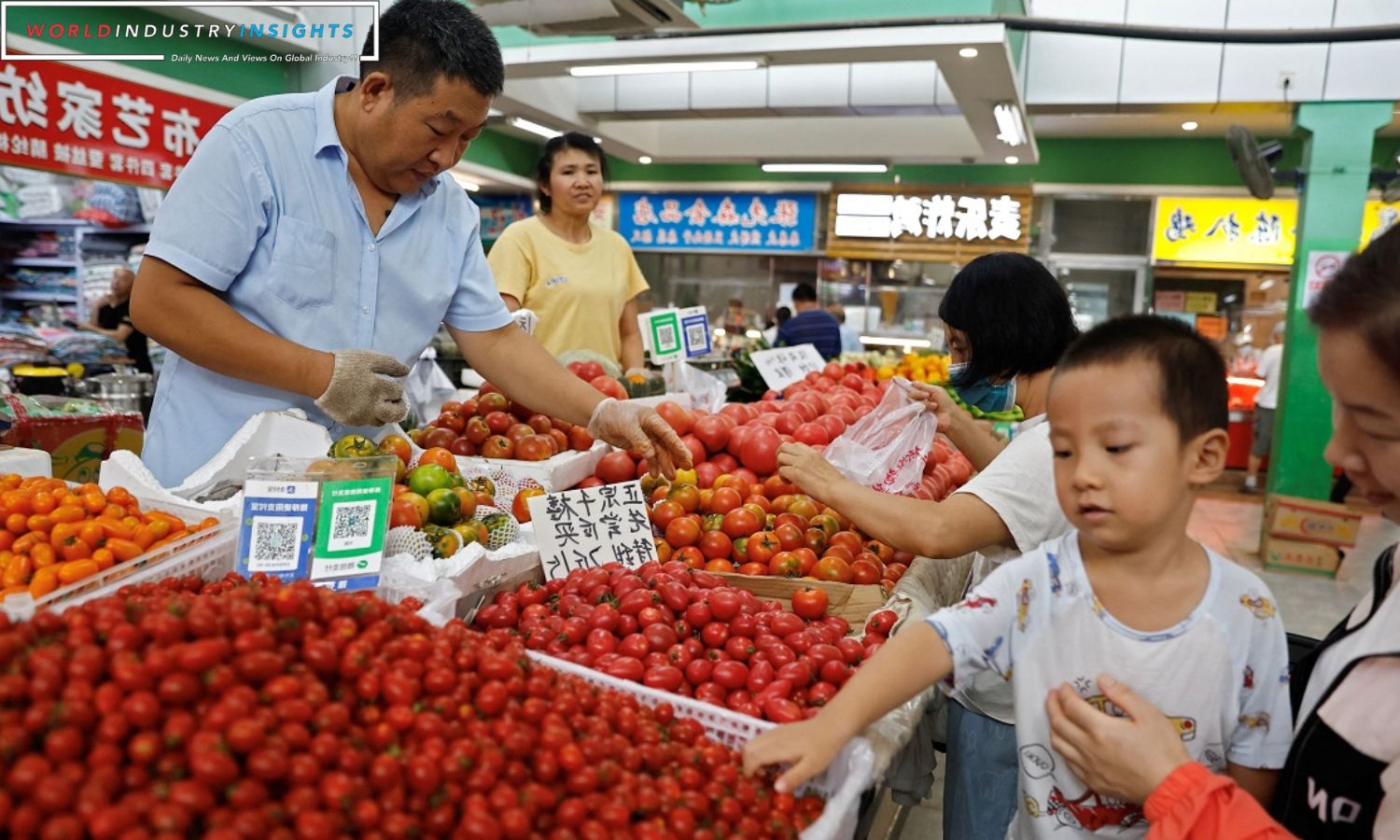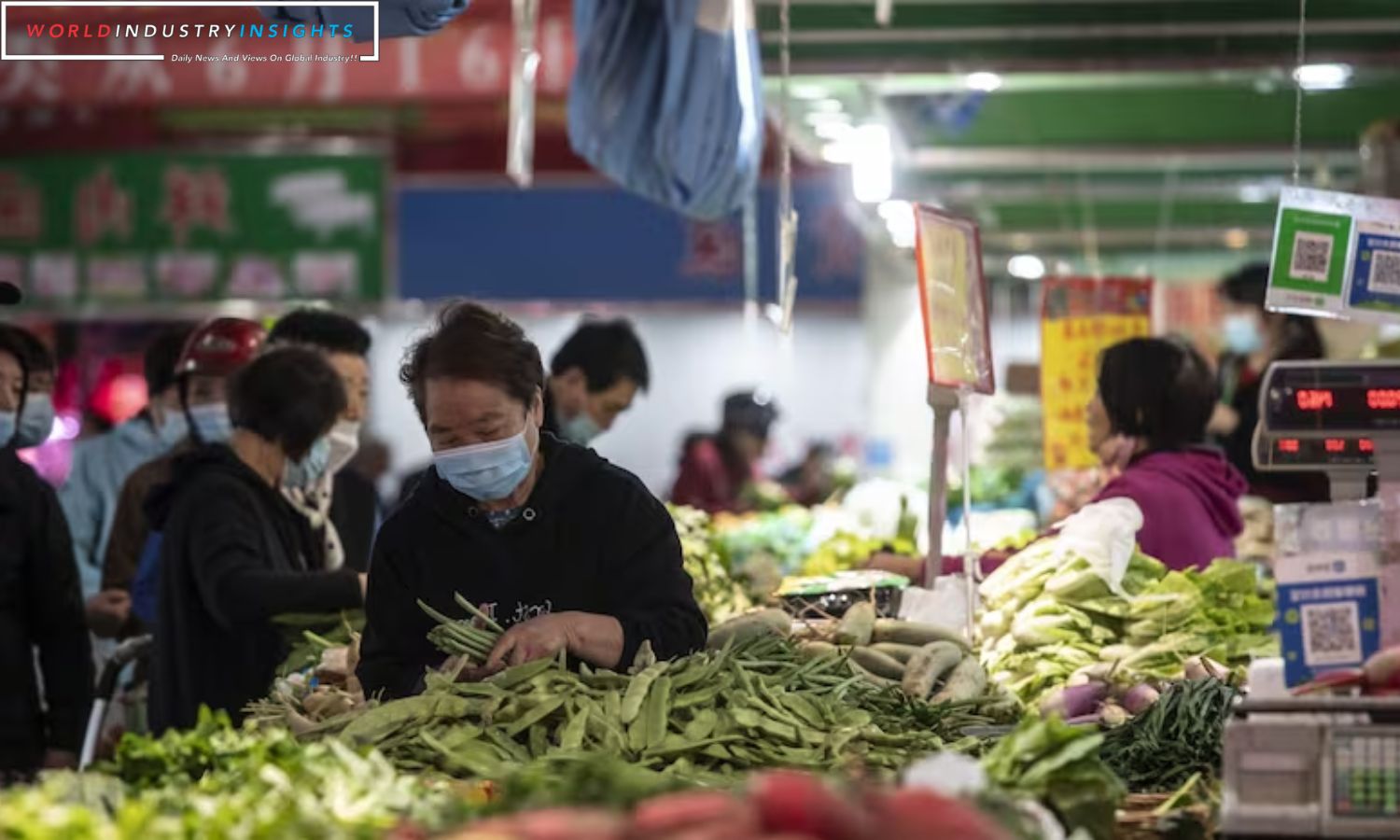China Economic Quandary: In an unexpected turn, China faces deflationary fears as consumer prices fall the most in three years. Recent National Bureau of Statistics data has shook the economy, raising worries about the country’s recovery in a complicated economy with diminishing domestic demand. The Consumer Price Index (CPI) fell 0.5% year-over-year and month-over-month, exceeding expectations. This differs from previous projections and highlights the challenges of reduced domestic demand and a complex economy.
The year-on-year CPI decline, the most significant since November 2020, adds to the growing list of economic indicators triggering discussions about the necessity of additional policy support to fortify China’s economic growth. Several factors have been identified as contributors to this surprising downturn. Global energy prices have witnessed a downward trajectory, impacting overall inflationary pressures. Concurrently, the waning impact of the winter travel boom and a persistent supply glut have added to the deflationary pressures.
Xu Tianchen, a senior economist at the Economist Intelligence Unit, points to three key factors behind this data: falling global energy prices, the fading winter travel boom, and an ongoing supply glut. Xu suggests that downward pressure is likely to persist into 2024, fueled by efforts to deleverage among developers and local governments and an anticipated global growth slowdown.
Despite core inflation, excluding food and fuel prices, holding steady at 0.6% year-on-year, the weak core CPI reading sends a clear signal of persistently sluggish demand. Bruce Pang, Chief Economist at Jones Lang Lasalle, emphasizes the urgency of policy measures to ensure sustainable and balanced growth in light of this.
Also Read: China Economic Crossroads: Deflationary Winds Sweep as Consumer Prices Plunge
China’s central bank Governor Pan Gongsheng’s optimism about inflation moving upward appears challenged by the recent data. The Producer Price Index (PPI) fell 3.0% year-on-year, marking the 14th consecutive month of decline and the most rapid drop since August. This continuous deflationary trend in the manufacturing sector poses additional hurdles for China’s economic recovery.
Throughout the year, China has grappled with various economic headwinds, including mounting local government debt, housing market challenges, and tepid demand both domestically and globally. Moody’s recent warning about a potential credit rating downgrade highlighted the costs associated with supporting local governments and state firms amidst the ongoing property crisis. Despite the caution, China’s finance ministry expressed confidence in the economy’s rebound potential and its ability to manage risks.
The government has outlined plans to boost domestic demand and enhance economic recovery in 2024, as indicated by the Politburo, a top decision-making body of the ruling Communist Party. The focus now shifts to potential government stimulus measures, with expectations set for announcements during the upcoming “Central Economic Work Conference” later this month. The challenge for policymakers lies in delicately balancing the need to address deflationary pressures while fostering sustainable economic growth in an evolving global economic landscape.
Our Reader’s Queries
Why is China’s economy struggling?
China’s growth prospects are under threat due to significant structural issues, including a decline in productivity growth and an aging population. These challenges go beyond the impact of the pandemic and the severe contraction in the construction sector. To ensure sustained growth, China must address these issues and implement effective solutions.
What is the reality of China’s economy?
Although the era of double-digit growth may be over, China is still in a favorable position to achieve a higher growth rate than most developed economies. This is due to the fact that China’s per capita GDP is currently less than a quarter of that of the United States. In the foreseeable future, China has the potential to experience significant growth.
Has China ever had an economic crisis?
During China’s previous banking crisis two decades ago, non-performing loans were transferred to state asset-management companies at par value. However, financial crises can also arise when local investors withdraw their investments, rather than foreign investors. These crises may not always be sudden and severe, as was the case during the global financial crisis of 2007-2009.
What is the economic condition of China?
China’s economy is a unique blend of socialism and market principles, with a focus on industrial policies and strategic planning. As the world’s second largest economy by nominal GDP, it’s only behind the United States. However, when measured by purchasing power parity (PPP), China has been the world’s largest economy since 2016.


